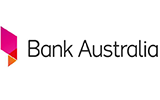Applying for a home loan can be straightforward when you know how the process works from start to finish. Our guide covers everything you need to know.
What to do before you apply for a home loan
It’s important to get your finances in order before you apply for a home loan. This includes building a history of savings, paying down debts and doing initial research on home loan options that may be suitable for you.
Here’s what to do before you apply for a home loan:
Save for a deposit
You’ll generally need a deposit saved before a lender considers your home loan application, unless you apply with a guarantor (in which case you may be eligible for a no deposit home loan). You can use a high interest savings account or term deposit with a high rate to help you grow your savings faster.
The bigger your deposit, generally the more you can borrow. Most lenders require a minimum deposit of 10%, but the standard is 20% of the value of the property to avoid lender’s mortgage insurance (LMI). There are government grants and initiatives, like the Home Guarantee Scheme (HGS), which can help eligible home buyers buy a home with a deposit of as little as 5% (or 2% for single parents) without paying LMI. It’s available through participating banks.
Pay down your debts (if any)
You should aim to pay down any outstanding debts and reduce any credit limits at least 12 months before you apply for a home loan. Every $10,000 of debt you clear can increase your borrowing capacity by $100,000, according to Mansour Soltani, Money's home loan expert. This can show financial responsibility which lenders look for in borrowers. Avoid taking out unnecessary credit in the meantime.
Check your credit score
Check your credit file for any red flags or errors that could potentially impact your credit score or affect your ability to secure a home loan with a competitive interest rate. You can request a free copy of your credit report from any of the main credit bureaus in Australia (e.g. Equifax, illion and Experian) every three months.
Estimate your borrowing capacity
This is how much a lender may be prepared to lend you based on your income and broader financial situation. Understanding your borrowing capacity can help you set a realistic budget and expectations when shopping for a home. You can use an online calculator from any lender to estimate your borrowing capacity. According to the ABS, the average size of new home loans in Australia is $599,000 for owner-occupiers.
Know your potential LVR and how it can impact your mortgage rate
Your loan-to-value ratio (LVR) is your loan amount as a percentage of your property's value. For example, if you want to buy a home for $600,000 with a deposit of $120,000, you’d need to borrow $480,000 from the bank, resulting in an 80% LVR. An LVR above 80% will generally incur LMI. LVR is lenders' most important metric when assessing your home loan application and home loan interest rate, according to Mansour Soltani, Money's home loan expert.
Compare different lenders
Do a home loan comparison of different banks and non-bank lenders and their products. Which lenders offer the lowest rates? Which have first-home buyer incentives or cashback offers if you’re refinancing? Be sure to compare the different home loan features, terms and conditions of each product. Being informed about what’s available from multiple providers may empower you to negotiate with your lender during your application.
Consider seeking professional advice when applying for a home loan

Mansour Soltani , Money.com.au's Home Loans Expert
“Work with a professional who’s up to date with all home loan types available and the banks’ changing appetite for certain risks. Otherwise, you could end up contacting the wrong lender, getting rejected or ending up with a rate that’s not competitive. Alternatively, you could end up with a financial product that’s not suited to your life stage and that can put you years behind.”
Mansour Soltani , Money.com.au's Home Loans Expert
4 documents you need when applying for a home loan
When applying for a home loan, you’ll need to provide some paperwork to verify your personal and financial information. Here are some of the documents lenders will ask you for during your home loan application:
1. Identification documents
You’ll be required to satisfy the 100 points of ID system when applying for a home loan. You’ll be asked to provide at least one primary photographic form of ID (e.g. passport or driver’s licence), and one non-photographic form (e.g. birth certificate), as well as secondary documents like a Medicare card, bank statements and utility bills.
Home loan 100-point personal identification system
Primary documents (70 points)
- Australian passport
- Birth certificate
- Australian citizenship certificate
Primary documents (40 points)
- Driver’s licence
- Student ID
- Government employee ID
- Photo identification card issued for Australian regulatory purposes (e.g. aviation/maritime security)
- Defence Force identity card
Secondary documents (40 points)
- Department of Veterans Affairs (DVA) card
- Centrelink card
Secondary documents (25 points)
- Medicare card
- Property lease agreement (current address)
- Taxation assessment notice
- Bank statements
- Council rate notice
- Utility bills
2. Proof of income
Your lender will require some proof of income to assess your borrowing power. You may be asked to provide:
- Two payslips for the year to date or tax returns for the year to date if self-employed
- A contract of employment which states your annual salary (optional)
If you're self-employed:
- A tax return for the year to date (some lenders may require two latest returns)
- Up to two years of financial statements, including profit and loss (P&L) statements
First-home buyers with a deposit of less than 20% may be asked to submit additional paperwork, including:
- Bank statements showing your deposit has been accrued over time and sitting in a bank account for at least three months.
OR
- A tenant ledger or rental reference letter signed by a real estate or property manager confirming you’ve always paid rent on time. The letter should show your name, start lease date and weekly rent sum.
3. Bank statements
Most lenders will ask for three months of bank statements to verify your income against your living expenses. If you’re a first-home buyer, they will also check that your deposit has been accrued over time.
What lenders want to see is a genuine history of savings and responsible spending. Any late fees will be a red flag. If you want to know how your bank statements might look to a lender, try our Free Bank Statement Health Check.
Be prepared to have to explain any mismatch in your earnings and expenditures. Whether it’s a recent car purchase or a cash gift from family (in which case you’ll need a letter from your benefactor), it’s important to indicate this to your lender for full transparency.
4. Proof of your assets and liabilities
Your lender will also ask for a summary of your debts and assets to calculate your debt-to-income ratio (the percentage of your monthly gross income going towards debts) and assess your ability to repay a home loan.
Here’s a snapshot of what’s considered a debt or an asset:
| Debts | Assets |
|---|---|
Credit card limits | Money in a savings account or term deposit |
Investments (e.g. shares, mutual funds, bonds) | |
An existing home loan | Cars and other vehicles |
Buy now, pay later (BNPL) accounts | Real estate |
Student debt | Plant, machinery, livestock, etc |
Step-by-step guide on how to apply for a home loan
1. Fill out the lender’s home loan application form
You’ll be asked some basic questions about your finances, deposit or equity (if you’re refinancing) and the type of property you want to buy. Based on this information, your lender will estimate how much you can borrow and at what rate.
It’s usually quicker to apply for a home loan online via the lender’s website, but you can alternatively book an appointment with a home lending specialist if you prefer to speak to a person, are self-employed (different eligibility requirements apply), or generally have questions about the process. You can apply for a home loan directly with a lender or through a mortgage broker.

Mansour's tip: Every bank has a slightly different home loan application process and credit underwriting standards. Don't get overwhelmed with the required information and take it step by step. Remember, communication with your lender is key throughout the process.
2. Submit your documents
The lender will give you a list of paperwork you need to submit, including payslips, bank statements, identification documents, etc. A home loan specialist will verify your income against your expenses and liabilities to more accurately assess your borrowing capacity. They will apply an additional serviceability buffer of 3% (to ensure you can still afford your mortgage if interest rates rise). It’s best to collect all necessary documents in advance to help speed up the process.
Mansour’s tip: We always recommend you complete all documents and send them across in one go rather than in pieces. The lender will not assess your application until all documents are provided.
3. The lender will conduct a credit check
The lender may conduct a ‘soft’ credit check to flag any potential issues with your credit file early or may opt to complete a ‘hard’ credit check (which impacts your credit score) from the get-go. That’s when a home loan specialist will check your credit report for any outstanding debts, missed payments or defaults. Keep in mind lenders have to ask your permission before conducting an official credit check, in accordance with the National Consumer Credit Protection Act 2009.
Your credit report will generally contain the following information:
- Your credit score
- Credit products you have
- Your repayment history for those products (if provided by the lender)
- Past or failed applications you have made for credit
- Overdue debts and defaults
Mansour’s tip: Run a credit report on yourself to get ahead of any upcoming issues and try to resolve them prior to lodging your home loan application. You may have an issue on your credit file that would equate to an automatic decline, so speak to your mortgage broker to see if this is relevant to you.
4. Get pre-approval
After your financial information is validated, you may be granted pre-approval on your home loan (or conditional approval). This means the lender has agreed in principle to lend you a specific amount of money based on the information provided and subject to conditions. You'll receive a pre-approval letter from your lender stating the maximum loan amount you qualify for and your interest rate.
Pre-approval is valid for up to three months, depending on the lender. Keep in mind home loan pre-approval is not a formal loan approval, and a lender may still deny your application if your circumstances change.
Mansour’s tip: The lender may or may not have assessed your file in full at the pre-approval stage, so don't get over-excited. Now that you have a pre-approval in place, you need to pick the right property that your lender will accept as a security.
5. Your lender will conduct a property valuation
Once you've found a home you want to buy and made a successful offer, the lender will conduct a valuation of the property to determine its market value and your LVR. This can be an electronic valuation based on previous comparable sales data or it could involve a physical inspection.
Mansour’s tip: If you’re not happy with the valuation result, there are still levers you can pull. Ask your mortgage broker if they ordered a full valuation or just an automated valuation model (AVM). An AVM might not be capturing renovations or upgrades done to the property. If that does not work, you can ask your mortgage broker to run the valuation with other lenders to see if you get closer to your needed figure. We call this ‘shopping the valuation’.
6. Get unconditional approval
After your contract of sale is signed and your property valuation is conducted, you can get unconditional approval (or full approval). You’ll have to confirm your financial situation hasn’t changed since you were given pre-approval before your home loan application can be finalised.
Mansour’s tip: Make sure you engage a great solicitor or conveyancer to review your contract of sale to make sure everything is above board. Don’t choose a solicitor or conveyancer based on price, but on experience and reputation.
7. Receive a home loan offer
Your lender will issue a formal loan offer detailing the terms and conditions of the loan, including your rate. Review the loan offer carefully and sign it if you accept the terms.
Mansour’s tip: Make sure that you’re happy with the loan repayment structure and that the figures are what you have discussed and agreed on with the lender. Did you agree on a variable or fixed rate? Monthly or fortnightly repayments? Are the rates and fees correct? Humans make mistakes all the time, once you have signed the contract, it might be difficult to change.
8. Get ready for settlement
Settlement is the finish line on your home-buying journey. It usually involves making a final pre-settlement inspection before you take over the deed (ownership of the property). Your conveyancer should manage your home loan registration and property title transfer. Your lender will be responsible for making the final payment to the seller.
Mansour’s tip: This is the stage where things can go wrong for the silliest reasons, so make sure that you have the right people engaged for the job. Remember that if settlement is delayed, you may be up for daily penalty interest until the transaction settles.
Is the application process the same for all home loans products?
The application process may vary depending on your home loan product and structure. There may also be different document and eligibility requirements depending on your lender. Here are the different home loan types available in Australia:
Applying for a different home loan?
Should you use a mortgage broker?
You may have a better chance of getting approved for a home loan if you work with a mortgage broker. That’s because they generally have a network of lenders on their books, and know the mortgage market inside and out, including what government grants you may be eligible for.
According to the latest survey by the Mortgage and Finance Association of Australia (MFAA), mortgage brokers facilitate about two thirds of new residential home loans. The main reasons home buyers choose to use a mortgage broker include their knowledge and expertise (17%) and because they do all the groundwork (16%), according to a survey conducted by ASIC.
What to do if your home loan application is declined
The property was overpriced
The property you’re buying is deemed risky by the bank
The property didn’t meet the lender’s lending criteria
Failure to provide correct or complete documentation
Bad or limited credit history
Insufficient evidence you can make repayments
Irresponsible spending
Your deposit is too small
Not enough proof of savings
Lenders whose home loan application process we analysed
Lenders analysed
To give you a realistic picture of the home loan process in Australia, Money analysed some of Australia's biggest lenders including:
- Commonwealth Bank
- NAB
- ANZ
- Westpac
- St. George
- Macquarie Bank
- Suncorp
- Bendigo & Adelaide Bank
- Bank of Queensland (BOQ)
- BankSA







